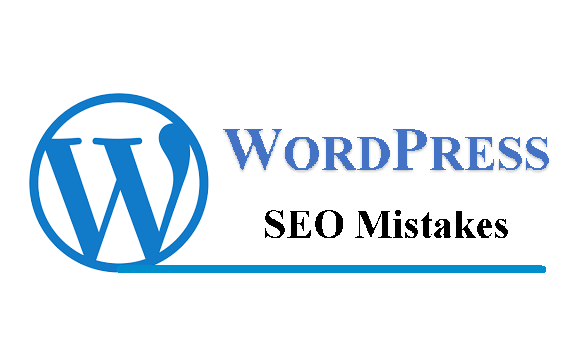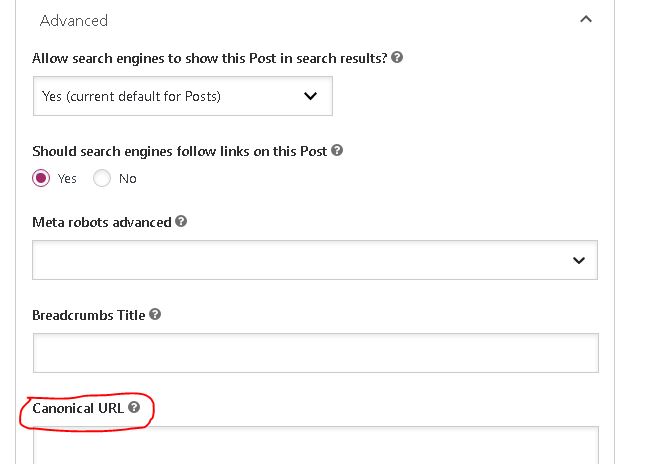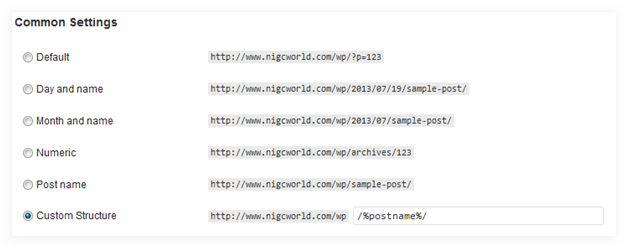
Most bloggers know the power of WordPress. Yes, I am a huge fan of WordPress, too. I remember as one said that WordPress is the wonderful creation of mankind. It might be the reason why it has so many users worldwide. It is well-equipped for search engine optimization. However, here are some common WordPress SEO mistakes you should avoid. Because you need additional optimization when you see straight to SEO.
If you do none other than writing and publishing content, you are missing a lot of WordPress potential. It is more powerful if you add some good plugins and tweak the core CMS. I often see users don’t look for anything else than the after-installed state of the software.
Below are common SEO mistakes commonly overlooked by many WordPress users. I hope this article will help you fix the issues easily.
Common WordPress SEO Mistakes to Avoid
1. Not Having an XML Sitemap
If you don’t use an XML sitemap on your WordPress site, you have a great SEO mistake. Search engines use the sitemap. Google spiders use it to discover your pages and get additional information like how often your site is updated. With the help of it, Google can index the page metadata and other new pages added from time to time. It can also alert Google for any changes in your site. Hence, a sitemap is very important for a website or blog.
An XML sitemap is a formatted list of page URLs. You can create it manually or use a plugin to create it.
How to create the XML sitemap?
If you don’t have the sitemap, install a plugin like XML Sitemaps on your site. If you use an SEO plugin like Yoast SEO or Rank Math, it generates the sitemap for you. Then, you need to submit it to search engines. For Google, submit it to the Search Console.
2. Not Solving Canonical URL Issues
If you have been for a while in search engine optimization, I am sure you know well about the issues. But, if you are a newbie, the term ‘canonicalization’ may confuse you. Here, let me tell you briefly. For example, someone may reach your homepage with any of the following URLs:
www.yoursite.com, or
yoursite.com, or
http://www.yoursite.com/index.php, or
https://yoursite.com/index.php.
But the problem is this. You have many URLs for the same destination page. This may confuse Google to identify which one is the right URL of the page. So, it will result in duplication issues. You can solve it by providing a preferred canonical URL in the following ways:
Use REL=”Canonical” tag
In your page’s tag of the HTML section, add the tag with the preferred URL as given below:
Do it with your SEO plugin
If you use a plugin like Yoast SEO, you can provide the canonical URL of any page or post. Login to your WordPress Dashboard and click Posts. Then, open any post to view in the editor. In the Yoast section, click Advanced to expand it. Then, find the canonical URL box and type in your preferred URL of the page.

Do the same in the Search Console
In Google Search Console, you should also use the same preferred URL. Don’t mix your canonical URLs between http and https or www and non-www. Make it the same URL.
3. Mistakes with Categories and Tags
I wonder to see that some webmasters don’t know exactly the difference between WordPress Categories and Tags. So, they use them incorrectly. It is an SEO mistake. Let’s understand them clearly.
Both categories and tags help to structure your site content. WordPress uses these taxonomies for content grouping. Categories can be parents or children of each other. You make your posts more focused by assigning them to the right categories. Now, if you dissect your posts even further to more particular groupings, you should use tags.
For example, your site focuses on digital marketing. If so, your categories can be on-page SEO, off-page SEO, social media marketing, email marketing, etc. On the other hand, tags are words and phrases related to the post or page topic. Therefore, categories are hierarchical, while tags are non-hierarchical.
Hence, you should take care of assigning tags for your content. If you don’t control how you add them, your site may end up with a huge number of tags. That will result in many of them being used once, which means the tag page and the post are the same. This may result in duplication or thin content. Therefore, prepare a list of them in advance and try to use them repeatedly where possible (in relevant posts).
4. Not Using the Right Permalink
Some WordPress users don’t care about Permalink Structure. The default WordPress URL is something like www.yoursite.com/?p=456. To highlight it more relevant to visitors, you should change the permalink structure. By doing so, the URL will appear in bold words in Google results.
For me, I want the Post Title included in the URL to correlate with the title. For example, if your post title is Enjoyable Summer Vacation Destinations, the URL will look like this:
www.yoursite.com/enjoyable-summer-vacation-destinations/
To do this, go to Dashboard. On the left sidebar, click on Settings, then click on Permalinks. On the Permalinks page, select Custom Structure and fill in the box as %postname% as shown in the following image. Then, save it:

5. Not Using a Related Posts Plugin
Related posts are a list of relevant content found on the site. A plugin can do it for you. They are important to increase page views on your blog/site. From the SEO perspective, they improve the internal link structure of the site. It also helps in reducing the Bounce Rate by keeping visitors longer on your site.
For example, when a visitor lands on your website or blog, he reads your post. At the end of the page, he finds a list of related pages. He is curious to know more about another related topic. So, he clicks on a link to the related pages to read. This reduces the Bounce Rate for keeping him longer on your site. Improving internal link structure and reducing Bounce rates boosts Google’s ranking. So, why not use a plugin for this purpose?
The best plugin, I know, is Yet Another Related Posts Plugin (YARPP). Install and activate it.
6. Not Optimizing Your Content for the SERPs
If you ignore it, you make a mistake for on-page SEO. Optimizing your pages for the SERPs can enhance the click-through rate. Usually, people scan Google results looking for the best one for their queries before their mouse clicks. They read the headlines and descriptions in the snippets and they click on the distinctive and appealing result.
Optimize your page for Google’s featured snippets. You might frequently see different featured snippets as a paragraph, number list, bullet list, table, or video. People see such a result distinctively from the rest. As a result, the click-through rate improves.
Do the following best practices:
- Craft your meta title and meta description to attract clicks
- Use schema markups.
If you use a plugin like Yoast SEO or Rank Math, it does the job for you. Also, read this article – How to optimize your blog post for search engines.
7. Not Optimizing Your Site Speed
Your page load time may affect the Google rankings. Page speed becomes a Google ranking factor. Hence, check your site speed with Google PageSpeed Insights. The tool gives you an overview of the aspects you should improve on to boost the speed of your page.
Read this guide > How to Improve Google Core Web Vitals.
8. Not Optimizing for Mobile Devices
Most modern WordPress themes are mobile-friendly. But if you are using an old theme, run the Mobile-Friendly Test tool for any page of your site. If not mobile-friendly, immediately take action. Change it to a responsive theme or use a mobile-friendly plugin. Note that Google announced mobile-first indexing. So, take care of it.
9. Failing to Reduce Bounce Rate
If visitors return quickly from your page to Google, it indicates that your page is low-quality, thin content. You should try to minimize it at your best. If not so, it will affect your Google rankings. Some of the following measures are to be taken up for the issue:
- Write engaging, quality content that is interesting to readers.
- Use Call-to-Action (CTA). It may be a ‘Buy’ button or a ‘Sign up’ button for your newsletter.
- Add internal links to the related pages of your site.
10. Trying to Rank for High Competition Keywords
It is wrong to target the high-competition keywords you can’t rank in Google. Instead, find long-tail keywords. They are low in competition. Although they are usually low in traffic volume, they are worth targeting. You can drive more traffic by optimizing more pages for such keywords.
Use a good keyword tool or find the service from the links below:
11. Avoiding Social Media Meta Data
Social media sites can bring traffic to your website. Increased traffic influences to boost Google’s rankings. Most SEO plugins like Yoast SEO can add open graph metadata for Facebook, Twitter, Pinterest, etc. Therefore, make sure you use an SEO plugin or any plugin that can enable open graph metadata.
12. Publishing Posts Irregularly
The more you publish content, the more chances you have to rank on Google. So, have a content schedule and try to post quality content regularly. That will help you rank for more keywords and bring more quality traffic. Also, don’t forget to update or refresh your old content. This will make your site and content evergreen.
13. Not Fixing Broken Links
You should check the broken links and fix them regularly. If not, they result in bad user experiences. Visitors will face a ‘Page not found’ error (404) since an external or internal link was altered or removed. Use Broken Link Checker, a plugin created for this purpose.
14. Not Structuring Header Tags
You should help Google understand the structure of your content. Here, these heading tags are important.
tag should be the page title.
and
tags are sub-headers on a page or post. They should be contextually relevant. You can use other headers if necessary.
15. Not Optimizing Images
Images are crucial for visitors to make them read the content and hook them. So, you need to learn about image SEO. They should be relevant and appealing. Insert relevant ALT tags for the images without keyword stuffing. Don’t forget to use images that load faster. For instance, WEBP images load faster than JPEG and PNG images.
They are some of the most common mistakes frequently neglected by WordPress users. If any of the mistakes happen with your site, pay attention and fix it immediately. Your SERP rankings will boost.
WordPress SEO Services
Your WordPress site might have many other hidden SEO issues. You need to find each issue your site encounters. Then, fix them one by one as far as you can. However, you can hire an expert specialized in WordPress SEO. For a small charge, their service will make your site error-free, SEO-optimized, and Google-friendly. Any critical problems you can’t solve will be eliminated. So, hire an SEO specialist if you want to use your time in other areas to grow your business.
Click the following link and find the right service for you:
Books on WordPress SEO
To improve your SERP rankings and traffic, you need to learn from experts and read their tips and tricks. We have selected some best books on the topic. Click the link below and learn the top SEO and marketing secrets from them:
Is this article helpful? If so, please share this page with friends and loved ones on your social media channels.
Disclosure: We are partners or associates of Amazon and other top brands. We may earn a small amount from qualifying purchases without increasing the price. Please read our full affiliate disclosure here.
Ibochouba Singh is a content writer and reviewer with a passion for writing about digital marketing and tech gadgets, including software tools and new tech gadgets. He has over 15 years of experience writing for several consumers and clients, including tech startups, marketing agencies, and software companies. He is writing many articles and product reviews for many websites, including nigcworld.com, buywin.in, medium.com, and quora.com.

